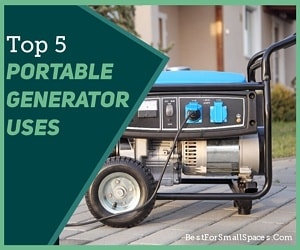
One of the main positives of having a small home, is that it is easier to heat up. Less square feet to heat up means quicker to heat and easier to keep hot. A smaller home will save you a lot of money on energy bills throughout the year.
In this article on the Best Heating Systems For Small Homes, I will look at a choice of heating options available to not only small homes but all homes. I hope to find out the ideal heating system for small apartments and for keeping a small house snug and warm for the least amount of money.
Central Heating
Furnace
The most common heating system in American homes is provided by a furnace. This furnace works by heating air and then pumping it through a system of air ducts that provide heat throughout the house. This heating system can be fueled by oil, gas or electricity.
Boilers
While furnaces provide heat by heating air, boilers provide heat by boiling water.
Boiler systems heat water, which is then passed through to the various radiators in each room. The most common fuel used in the boiling system is natural gas or oil.
Heat Pumps
A heat pump extracts heat from one place and transfers it to another. Refrigerators and air conditioners are common examples of heat pump technology in your home.
A heat pump system uses a two way air conditioner that heats homes in the winter and cools homes in the summer.
The system works during the summer by moving heat from indoors to outdoors. It does the opposite in the winter by taking heat from the outside and with the help of the electricity, pushes warm air inside.
Direct Heating
Gas Fired Space Heaters
Gas fired space heaters can be a suitable option for heating single rooms.
They are duct free, therefore won’t heat up a whole house. These space heaters most commonly use natural gas or propane.
Unvented gas space heaters can be a danger through combustion by-products and are banned in many states.
Electric Space Heaters
Plug-in electric fireplaces and electric space heaters are convenient to use, affordable to buy, but comparatively expensive to run.
Compared to using oil or gas, electricity is far more expensive to heat up a room. However, for intermittent use, it is a good option instead of the large set up costs of other options.
Wood-Burning and Pellet Stoves
Wood burning stoves are a cheap way of heating a home, especially if you cut your own wood. Even if you have to buy wood, it is generally cheaper than oil, gas and electricity.
Pellets are another option for stove fuel and are not only convenient but also provide better indoor air quality compared to burning wood.
Fireplaces
Gas or wood fireplaces look fantastic as a heating system, however they are often not the most efficient heat sources.
A lot of the heat generated is lost through the chimney. However, with a tight sealing door and a good chimney damper, a lot more of the heat can be saved and not wasted.
Radiant Heating
Radiant Floor Heating
A radiant floor heating system circulates warm water through tubes under flooring. It is quite expensive to install but is a great way of heating an entire area.
Unlike radiators, which heat the proximity near the radiator the most, radiant floor heating heats the entire area of the room.








